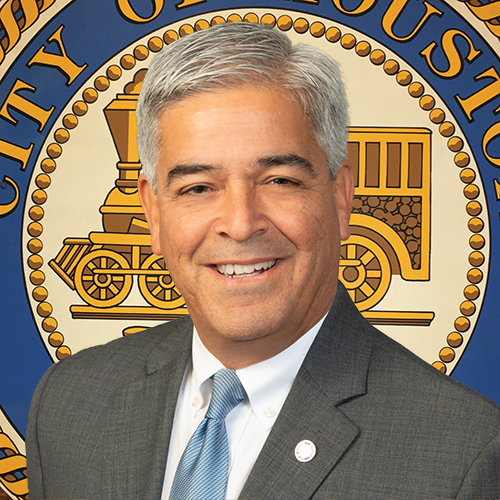A North Texas man charged with capital murder this month after he allegedly slipped his girlfriend abortion-inducing medication and caused a miscarriage marks the first time a murder charge has been brought in an abortion-related case in Texas.
The case tests a new method for reining in abortion pills — by threatening to prosecute individuals who provide them with the most severe criminal charge — while advancing the longstanding legal provision that defines an embryo as a person, legal experts say. The latter could raise serious implications about the legality of fertility treatments and in other legal realms such as criminal and immigration issues.
“It is shocking to people that the law can be used this way… that this is the extent and result of the more than 20 year old fetal personhood laws,” said Blake Rocap, a Texas attorney who works in abortion rights advocacy and studies pregnancy criminalization. Legal experts say the case will not change Texas laws that prevent women who receive abortions from being prosecuted.
According to an affidavit filed in Tarrant County by the Texas Rangers, 39-year-old Justin Anthony Banta put mifepristone, an abortion-inducing medication, into cookies and a beverage that he then gave to his pregnant girlfriend. Banta had previously asked her to get an abortion, but she said she had wanted to keep the child, according to the affidavit. A day after drinking the beverage, the woman miscarried.
The Texas Rangers did not respond to multiple requests for comment. The Tarrant County District Attorney’s Office, which must decide whether and how to prosecute the case, has not yet brought its own charges, according to a spokesperson.
Before Roe v. Wade was overturned, a fetus was not considered a person constitutionally. However, when Roe v. Wade was overturned, the whole opinion was overruled, including the idea that a fetus does not have the same rights as a person. That did not immediately mean that fetus personhood is established. But, Grossman and other experts see Banta’s case as an attempt to move further in that direction.
“The purpose of this has nothing to do with caring whether this woman was victimized, but it’s about trying to establish fetal personhood in a more direct way than they’ve been able to,” said Joanna Grossman, a law professor at Southern Methodist University Dedman School of Law.
If Banta is convicted and fetal personhood is established in the case, it could complicate a variety of issues, including whether IVF is still legal because it involves destroying unused frozen embryos. Last year, the Alabama Supreme Court ruled that frozen embryos are considered children.
“It has implications for all kinds of fertility medicine and it has potential implications for criminal and immigration law,” Grossman said. “If you detain a pregnant woman, are you illegally detaining the fetus who did not commit a crime? If you deport a pregnant woman, are you deporting a U.S. citizen because if we have birthright citizenship, when does that begin?”
[…]
Since the Supreme Court overturned Roe v. Wade in 2022, pregnant women and their health care providers have faced new forms of criminalization across the country. Texas created a “illegal performance of an abortion” crime and charged a Houston midwife with it in March.
Over the last year, state leaders have focused on trying to block the flow of abortion-inducing medication into Texas. The demand for the medication spiked 1000% after the state outlawed abortion.
The Texas Legislature tried and failed to pass a bill that would have imposed civil penalties on those who distribute abortion inducing medication. Additionally, Attorney General Ken Paxton sued a New York doctor for shipping abortion-inducing medication into Texas. That lawsuit will likely test New York state’s “shield law,” which protects providers from out-of-state prosecutions.
However, the Banta case represents a new strategy from a statewide law enforcement authority in chilling the use and provision of abortion-inducing medication in Texas.
Since Roe v. Wade was overturned, a person in Texas who helps a woman obtain an abortion has been liable not only for specific abortion charges, but now more serious charges like capital murder for their role in ending a pregnancy.
“The door has been open, [prosecutors] just walked through it,” said Rocap.
Even if this case is successfully prosecuted, it may not lead to the establishment of fetal personhood statewide or nationwide. It is likely for this case to end in a jury verdict which is not the equivalent of a Supreme Court decision setting a legally binding precedent.
If a jury finds Banta guilty, Grossman said he could also appeal the decision by claiming that he cannot be convicted of capital murder of a fetus. The appellate court decision, then, could potentially be binding in a way that a jury verdict is not.
However, Grossman believes the significance of Banta’s case does not necessarily lie in whether it’s successfully prosecuted. The way in which prosecutors have charged him for this crime is significant on its own.
She sees Banta’s case as a “trial balloon” for the anti-abortion movement. Banta is a naturally unsympathetic character, Grossman explained, so public sympathies will likely side with the anti-abortion side.
Since the charges were brought against Banta, local outlets across Texas and the nation have reported on the severity of the charges. Grossman believes that this has a “chilling effect” and is “sending a message” of fear to the general public regarding abortions. In that case, she is concerned that the damage has been done.
I must have missed the original announcement of this arrest, because this story was the first I’d heard of the case. Naturally, Jessica Valenti was on it.
In the first case of its kind, a Texas man accused of slipping his girlfriend abortion medication has been charged with capital murder. Police say Justin Banta’s then-girlfriend lost her pregnancy at 6 weeks, just days after the 38-year-old gave her a spiked drink. Banta, who is also accused of tampering with evidence, faces no charges for harming his girlfriend—only for what he did to her embryo.
In Texas, this woman wasn’t the victim of a crime—her pregnancy was.
By charging Banta with capital murder, Republicans are setting a precedent that says embryos, fetuses—even fertilized eggs—deserve equal protection under the law. Sound familiar? That’s because when fetuses have personhood and ‘equal protection’, abortion patients can be charged with murder.
And that’s what this case is actually about: Conservatives want to make broad abortion-related arrests—targeting providers, activists, patients, and their support systems. But they can’t do that without sparking massive legal and cultural backlash.
Banta’s case gives them the unsympathetic villain they need to convince Americans that fetal personhood and ‘equal protection’ laws are good things—laying the groundwork for the sweeping arrests they’re so desperate for.
How do I know? Well, some anti-abortion leaders love to hear themselves talk more than they do keeping strategy close to the vest.
Kristan Hawkins, president of Students for Life, admitted on a recent podcast that she and other movement leaders are “working to change culture” so that states can start prosecuting women. She said the “vast majority” of anti-abortion groups believe patients should face criminal charges—as soon as they can ensure the public is ready for it.
Once you start to look anti-abortion political moves through that framework—understanding that they’re trying to get Americans on board with arresting patients—everything they do becomes a lot clearer.
That’s why I see Banta’s arrest as just the latest move in a much bigger anti-abortion plan. Over the last few months, I’ve tracked a notable uptick in criminalization efforts: an increase in pregnancy-related arrests, bills and ‘studies’ designed to make more of those arrests possible, and a constant stream of messaging trial balloons to test just how outraged—or apathetic—Americans will be.
The hard truth? I believe we’re on the verge of a major criminalization push.
Conservatives are furious that bans haven’t reduced the number of abortions. (In fact, since the end of Roe, abortions have increased.) In spite of the legal restrictions and threats, many, many people are still getting the care they need.
And while the anti-abortion movement always intended to expand criminalization beyond providers, they knew they’d need to soften up the public first. The plan was to work on American culture, seeding a years-long shift that would make it easier for them to arrest patients without serious backlash.
Now, with abortion numbers rising—and anti-abortion organizations and legislators desperate to stop what they see as mass disobedience—I believe they’re fast-tracking that plan.
Here’s the good news: even an accelerated culture war takes time. None of what I lay out below is going to happen tomorrow. That means we’ve still got a window to intervene—and to fuck their shit up.
This overall push is not limited to Texas – read the rest of Valenti’s post for those details – but of course Texas is charting its own course. It’s interesting that the Tarrant County DA hasn’t filed any charges yet, but I wouldn’t read too much into that. I’m sure they’re being extremely deliberate. I’m also sure that if they get cold feet, the Attorney General’s office will be there to either browbeat them or take the case away from them. We’re a long way from a resolution here – we’re barely at the starting line – but there’s a lot already happening. I’ll keep an eye on this.






















